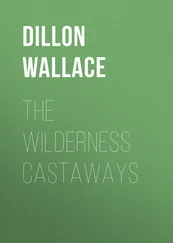Dillon Wallace - Packing and Portaging
Здесь есть возможность читать онлайн «Dillon Wallace - Packing and Portaging» — ознакомительный отрывок электронной книги совершенно бесплатно, а после прочтения отрывка купить полную версию. В некоторых случаях можно слушать аудио, скачать через торрент в формате fb2 и присутствует краткое содержание. Жанр: foreign_edu, Биология, Хобби и ремесла, на английском языке. Описание произведения, (предисловие) а так же отзывы посетителей доступны на портале библиотеки ЛибКат.
- Название:Packing and Portaging
- Автор:
- Жанр:
- Год:неизвестен
- ISBN:нет данных
- Рейтинг книги:4 / 5. Голосов: 1
-
Избранное:Добавить в избранное
- Отзывы:
-
Ваша оценка:
- 80
- 1
- 2
- 3
- 4
- 5
Packing and Portaging: краткое содержание, описание и аннотация
Предлагаем к чтению аннотацию, описание, краткое содержание или предисловие (зависит от того, что написал сам автор книги «Packing and Portaging»). Если вы не нашли необходимую информацию о книге — напишите в комментариях, мы постараемся отыскать её.
Packing and Portaging — читать онлайн ознакомительный отрывок
Ниже представлен текст книги, разбитый по страницам. Система сохранения места последней прочитанной страницы, позволяет с удобством читать онлайн бесплатно книгу «Packing and Portaging», без необходимости каждый раз заново искать на чём Вы остановились. Поставьте закладку, и сможете в любой момент перейти на страницу, на которой закончили чтение.
Интервал:
Закладка:
Dillon Wallace
Packing and Portaging
CHAPTER I
PACKING AND THE OUTFIT
ORDINARILY the verb to pack means to stow articles snugly into receptacles, but in the parlance of the trail it often means to carry or transport the articles from place to place. The pack in the language of the trail is the load a man or horse carries.
Likewise, a portage on a canoe route is a break between navigable waters, over which canoe and outfit must be carried; or the word may be used as a verb, and one may say, "I will portage the canoe," meaning "I will carry the canoe." In the course of the following pages these terms will doubtless all be used in their various significations.
Save for the few who are able to employ a retinue of professional guides and packers to attend to the details of transportation, the one chief problem that confronts the wilderness traveler is that of how to reduce the weight of his outfit to the minimum with the least possible sacrifice of comfort. It is only the veriest tenderfoot that deliberately endures hardships or discomforts where hardships and discomforts are unnecessary. Experienced wilderness travelers always make themselves as comfortable as conditions will permit, and there is no reason why one who hits the trail for sport, recreation or health should do otherwise.
In a description, then, of the methods of packing and transporting outfits the tenderfoot and even the man whose feet are becoming calloused may welcome some hints as to the selection of compact, light, but, at the same time, efficient outfits. These hints on outfitting, therefore, I shall give, leaving out of consideration the details of camp making, camp cookery and those phases of woodcraft that have no direct bearing upon the prime question of packing and transportation on the trail.
Let us classify the various methods of wilderness travel under the following heads: 1. By Canoe; 2. With Saddle and Pack Animals; 3. Afoot in Summer; 4. On Snowshoes; 5. With Dogs and Sledge. Taking these in order, and giving our attention first to canoe travel, it will be found convenient further to subdivide this branch of the subject and discuss in order: (a) The Canoe and its Equipment; (b) Camp Equipment for a Canoe Trip; (c) Personal Equipment; (d) Food; (e) The Portage.
CHAPTER II
THE CANOE AND ITS EQUIPMENT
A SIXTEEN-FOOT canoe with a width of at least 33 inches and a depth of at least 12 inches will accommodate two men, an adequate camping outfit and a full ten weeks' provisions very nicely, and at the same time not lie too deep in the water. A fifteen-foot canoe, unless it has a beam of at least 35 inches and a depth of 12 inches or more, is unsuitable. Three men with their outfit and provisions will require an eighteen-foot canoe with a width of 35 inches or more and a depth of no less than 13 inches, or a seventeen-foot canoe with a width of 37 inches and 13 inches deep. The latter size is lighter by from ten to fifteen pounds than the former, while the displacement is about equal.
The best all-around canoe for cruising and hard usage is the canvas-covered cedar canoe. Both ribs and planking should be of cedar, and only full length planks should enter into the construction. Where short planking is used the canoe will sooner or later become hogged—that is, the ends will sag downward from the middle.
In Canada the "Peterborough" canoe is more largely used than the canvas-covered. These are to be had in both basswood and cedar. Cedar is brittle, while basswood is tough, but the latter absorbs water more readily than the former and in time will become more or less waterlogged.
Cruising canoes should be supplied with a middle thwart for convenient portaging. Any canoe larger than sixteen feet should have three thwarts. To lighten weight on the portage, and provide more room for storing outfit, it is advisable to remove the cane seats with which canvas canoes are usually provided. This can be readily done by unscrewing the nuts beneath the gunwale which hold the seats in position.
Good strong paddles—sufficiently strong to withstand the heavy strain to which cruising paddles are put—should be selected. On the portage they must bear the full weight of the canoe; they will frequently be utilized in poling up stream against stiff currents; and in running rapids they will be subjected to rough usage. On extended cruises it is advisable to carry one spare paddle to take the place of one that may be rendered useless.
Experienced canoemen pole up minor rapids. Poles for this purpose can usually be cut at the point where they are needed, but pole "shoes"—that is, spikes fitted with ferrules—to fit on the ends of poles are a necessary adjunct to the outfit where poling is to be done. Without shoes to hold the pole firmly on the bottom of the stream the pole may slip and pitch the canoeman overboard. The ferrules should be punctured with at least two nail holes, by which they may be secured to the poles, and a few nails should be carried for this purpose.
A hundred feet or so of half-inch rope should also be provided, to be used as a tracking line and the various other uses for which rope may be required.
CHAPTER III
CAMP EQUIPMENT FOR A CANOE TRIP
PERSONAL likes and prejudices have much to do with the form of tent chosen. My own preference is for either the "A" or wedge tent, with the Hudson's Bay model as second choice, for general utility. Either of these is particularly adapted also to winter travel where the tent must often be pitched upon the snow. If, however, the tent is only to be used in summer, and particularly in canoe travel where a light, easily erected model is desired, the Frazer tent is both ideal for comfort and is an exceedingly light weight model for portaging.
Duck or drill tents are altogether too heavy and quite out of date. They soak water and are an abomination on the portage. The best tent is one of balloon silk, tanalite , or of extra light green waterproofed tent cloth. The balloon silk tent is very slightly heavier than either of the others, but is exceedingly durable. For instance, a 7 1/ 3× 7 1/ 3foot "A" tent of either tanalite or extra light green waterproof tent cloth, fitted with sod cloth, complete, weighs eight pounds, while a similar tent of waterproof balloon silk weighs nine pounds. A Hudson's Bay model, 6 × 9 feet, weighs respectively seven and seven and one-half pounds.
These three cloths are not only waterproof and practically rot proof, but do not soak water, which is a feature for consideration where much portaging is to be done and camp is moved almost daily.
Some dealers recommend that customers going into a fly or mosquito country have the tent door fitted with bobbinet. The idea is good, but cheese cloth is much cheaper and incomparably better than bobbinet.
The cheese-cloth door should be made rather full, and divided at the center from tent peak to ground, with numerous tie strings to bring the edges tight together when in use, and other strings or tapes on either side, where it is attached to the tent, to reef or roll and tie it back out of the way when not needed.
When purchasing a light-weight tent, see that the dealer supplies a bag of proper size in which to pack it.
A pack cloth 6 × 7 feet in size, of brown waterproof canvas weighing about 3 1/ 2pounds, makes an excellent covering for the tent floor at night. On the portage blankets and odds and ends will be packed and carried on it. If one end and the two sides of the pack cloth are fitted with snap buttons it may be converted into a snug sleeping bag with a pair of blankets folded lengthwise, the bottom and sides of the blanket secured with blanket safety pins as a lining for the bag.
Читать дальшеИнтервал:
Закладка:
Похожие книги на «Packing and Portaging»
Представляем Вашему вниманию похожие книги на «Packing and Portaging» списком для выбора. Мы отобрали схожую по названию и смыслу литературу в надежде предоставить читателям больше вариантов отыскать новые, интересные, ещё непрочитанные произведения.
Обсуждение, отзывы о книге «Packing and Portaging» и просто собственные мнения читателей. Оставьте ваши комментарии, напишите, что Вы думаете о произведении, его смысле или главных героях. Укажите что конкретно понравилось, а что нет, и почему Вы так считаете.












